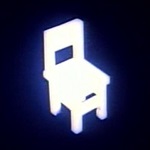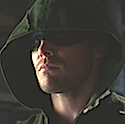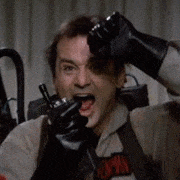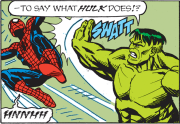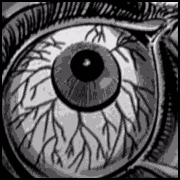|
Magic Hate Ball posted:Mostly thanks to the French new-wave. It's funny because for the stereotype I'd spot you the Left Bank stuff and Godard's later work, but all the "core" New Wave films pretty much have straightforward plots and fast-paced editing, and are usually filled with sexy women, guns, and pop music. It's like people using "Citizen Kane" as the epitome of "boring art film"
|
|
|
|

|
| # ? May 11, 2024 08:24 |
|
Oh yeah, the new wave classics are amazingly lively but you can definitely see stuff like Malle's The Lovers giving that impression (it's crazy that he made that in between Elevator to the Gallows and Zazie dans le metro).
|
|
|
|
Sprinkle equal parts Alain Resnais, Un homme qui dort, early Godard, and maybe a hiiiiint of Cocteau's camerawork and you have the ur-French film stereotype. "Colette is going to leave Étienne for Claude because Étienne has malaise. Malaise, dad!"
|
|
|
|
The French do like to push their literary tradition pretty heavily in their movies and I can see how that would feed into the pretensions stereotype (personally, I dig it). Like every single French movie these days has to have a scene in an English class where a teacher lectures about the philosophy of some French novel that's thematically relevant. Hell, late Godard is pretty much just a fever dream version of that.
|
|
|
|
Disharmony posted:How exactly is The Guest a John Carpenter homage? Synth soundtrack.
|
|
|
|
What makes Technicolor so immediately recognizable? If I had to guess, I'd say that colors tend to have a slightly higher value and slightly lower saturation giving them a bit of a pastel look, and the contrast is somewhat lower than more modern film. But if anyone has more precise or detailed information I'd love to hear it. Or steps on how to reproduce that look with random clips shot on a dslr.
|
|
|
|
I'm sure someone else (probably Egbert) will have a more detailed explanation but most of it was just in how it was shot. Three strips of black and white film ran simultaneously through the camera, and the image coming in through the lens was split three ways, each split running through a color filter - one red, one blue, and one green. I forget the exact specifics (it's worth looking up) but these separate color-filtered black and white film strips would be dyed in complementary colors and printed onto one film strip, thereby adding the colors together and producing a relatively full range. Part of why Technicolor is recognizable is because of all the faults - adding three colors together isn't a flawless process, so the colors aren't always accurate, and since perfect alignment of the strips was technically impossible there would be chromatic fringing, leading to a shimmery look where the colors spilled over. One of the biggest factors, though, is that, since the image going into the camera was being split three ways (and thereby dimmed by 2/3) the sets and actors had to be lit three times as brightly as usual, if not more, so a lot of the look comes from the technical side, the production aspect, which is why it's so hard to replicate in digital footage.
|
|
|
|
Considering how obsessed his fans are, I'm sure this thing exists. Are there any websites that provide a list of all the references/homages that Tarantino makes in his movies?
|
|
|
|
xcore posted:Considering how obsessed his fans are, I'm sure this thing exists. Are there any websites that provide a list of all the references/homages that Tarantino makes in his movies? Nah, everyone keeps those to themselves so they can bring them out in a Quentin Tarantino big dick contest.
|
|
|
|
xcore posted:Considering how obsessed his fans are, I'm sure this thing exists. Are there any websites that provide a list of all the references/homages that Tarantino makes in his movies? You could visit the movie connections section of each movie on IMDb.
|
|
|
|
regulargonzalez posted:What makes Technicolor so immediately recognizable? If I had to guess, I'd say that colors tend to have a slightly higher value and slightly lower saturation giving them a bit of a pastel look, and the contrast is somewhat lower than more modern film. But if anyone has more precise or detailed information I'd love to hear it. Or steps on how to reproduce that look with random clips shot on a dslr. Magic Hate Ball posted:I'm sure someone else (probably Egbert) will have a more detailed explanation but most of it was just in how it was shot. Three strips of black and white film ran simultaneously through the camera, and the image coming in through the lens was split three ways, each split running through a color filter - one red, one blue, and one green. I forget the exact specifics (it's worth looking up) but these separate color-filtered black and white film strips would be dyed in complementary colors and printed onto one film strip, thereby adding the colors together and producing a relatively full range. Part of why Technicolor is recognizable is because of all the faults - adding three colors together isn't a flawless process, so the colors aren't always accurate, and since perfect alignment of the strips was technically impossible there would be chromatic fringing, leading to a shimmery look where the colors spilled over. One of the biggest factors, though, is that, since the image going into the camera was being split three ways (and thereby dimmed by 2/3) the sets and actors had to be lit three times as brightly as usual, if not more, so a lot of the look comes from the technical side, the production aspect, which is why it's so hard to replicate in digital footage. The first thing, which isn't as relevant today, is the printing process of Technicolor. Up until recently, B&W stock has always had more tonal range and depth than color. That's why B&W films look so great - the stock isn't carrying three layers of information, lowering the resolution. Technicolor, as a lab, had a huge degree of control over color due to having separations. Also, nearly every 3-strip Technicolor feature had a Technicolor color consultant (usually Natalie Kalmus until the early 1950s). It was just a great system. It also helped that Technicolor's lab was the best in the industry. That's why nearly all 3-strip Technicolor features exist in such great quality (outside of Fox's pre-1950 holdings) and effects/dissolves look a lot better than B&W films of the time. Prints were also made using metal-based dyes rather than organic dyes like Eastmancolor. Technicolor also required a gigantic amount of light and the film was usually finer grained to allow for better sharpness. The thing about color fringing is actually a misconception. In later years, after negatives had shrunken or become damaged with age, color started to drift. On original prints, Technicolor's system allowed for a surprising accuracy. I've seen a few dye-transfer films in 35mm and other than some slight softening, the image quality is fantastic. They were also able to do a lot of work with Eastmancolor films printed in dye-transfer like The Godfather. They were able to fix the "dinner murder" scene through adjusting color separations. That has since been corrected digitally, but that's impressive to have that degree of correction in 1972. The Wizard of Oz only had minor fringing issues before digital work and mostly around cuts. Films that really needed it for modern restorations were ones like The Red Shoes and The Life and Death of Colonel Blimp due to the negatives not only being shrunken, but with mold infestation. Apparently that's a problem with a lot of British Technicolor films. Fox's films are in worse shape because they destroyed all their nitrate Technicolor negatives in 1976 after copying to Eastmancolor. I think all their safety film Technicolor films are fine (post-1951), but it was an incredibly stupid thing for them to do. Especially when other studios that sold their holdings for TV made sure Technicolor negatives were kept intact like Warner Bros. and Paramount. Also, cinematographers had to be hand-picked by Technicolor. Look at the IMDB at some of the classic Technicolor films and see the cinematographers involved. Jack Cardiff, Ray Rennahan, George Perinal, Robert Krasker, Ernest Haller, Harold Rosson, etc. Pretty much the best in the industry at the time. The Wikipedia article on Technicolor is great and there's also a section on the Widescreen Museum: http://en.wikipedia.org/wiki/Technicolor http://widescreenmuseum.com/oldcolor/technicolor4.htm Egbert Souse fucked around with this message at 16:41 on Jan 19, 2015 |
|
|
|
When there is 3/4 production companies in the credits, who did the majority. Is someone giant like village roadshow in the financing distributing parts while the smaller ones are more creative producers? Help me understand!
|
|
|
|
How's the Veronica Mars movie?
|
|
|
|
Nostalgia4Dicks posted:How's the Veronica Mars movie? It's basically pure fan service but it's mostly great at that if you consider yourself a fan.
|
|
|
|
I liked the show and it bored the gently caress out of me.
|
|
|
|
Nostalgia4Dicks posted:How's the Veronica Mars movie? Like pretty much every big crowdfunding thing the fact that it was crowdfunded was the most noteworthy thing about it.
|
|
|
|
bows1 posted:When there is 3/4 production companies in the credits, who did the majority. Is someone giant like village roadshow in the financing distributing parts while the smaller ones are more creative producers? Help me understand! There is no hard and fast rule but presentation credits are usually taken by financiers and distributors and production credits by companies who helped actually make the film. For example, making up some credits: Film4 and Screen Yorkshire (bigger investors) In association with Hanway Films (sales agent/international distributor) and LipSync (smaller equity) Present A Heyday Films, Nordisk Films and BAC Films production (3 main production companies assuming co-production) In association with Element Films (smaller coproducer) In coproduction with Film I Vast (smaller investor/coproducer) When one knows what the companies are and what they do one can get a decent idea of how the film was put together by reading the credits. You also need to review the individual credits to get the full picture.
|
|
|
|
Egbert Souse posted:The first thing, which isn't as relevant today, is the printing process of Technicolor. Up until recently, B&W stock has always had more tonal range and depth than color. That's why B&W films look so great - the stock isn't carrying three layers of information, lowering the resolution. Technicolor, as a lab, had a huge degree of control over color due to having separations. Also, nearly every 3-strip Technicolor feature had a Technicolor color consultant (usually Natalie Kalmus until the early 1950s). It was just a great system. It also helped that Technicolor's lab was the best in the industry. That's why nearly all 3-strip Technicolor features exist in such great quality (outside of Fox's pre-1950 holdings) and effects/dissolves look a lot better than B&W films of the time. Prints were also made using metal-based dyes rather than organic dyes like Eastmancolor. Technicolor also required a gigantic amount of light and the film was usually finer grained to allow for better sharpness. I aksed this somewhere else and never got an answer, but how come early color, especially two tone technicolor, never caught on? Stuff like Doctor X looks cool as gently caress.
|
|
|
|
therattle posted:There is no hard and fast rule but presentation credits are usually taken by financiers and distributors and production credits by companies who helped actually make the film. For example, making up some credits: Thanks! Im trying to find Creative/Production companies to apply to more than Financing production companies so this helps.
|
|
|
|
What's with PTA casting the same guy for 2 roles in There Will Be Blood? It's so odd. Like I thought maybe Eli had some sort of dual personality thing going on or metaphor but in the wiki it just said the other actor quit so they had Dano do that part as Paul too. Such a small scene, why not just have some other actor do it?
|
|
|
|
thehandtruck posted:What's with PTA casting the same guy for 2 roles in There Will Be Blood? It's so odd. Like I thought maybe Eli had some sort of dual personality thing going on or metaphor but in the wiki it just said the other actor quit so they had Dano do that part as Paul too. Such a small scene, why not just have some other actor do it? Aren't they supposed to be twin brothers?
|
|
|
|
thehandtruck posted:What's with PTA casting the same guy for 2 roles in There Will Be Blood? It's so odd. Like I thought maybe Eli had some sort of dual personality thing going on or metaphor but in the wiki it just said the other actor quit so they had Dano do that part as Paul too. Such a small scene, why not just have some other actor do it? IIRC, Dano was cast as Paul originally, they shot his scenes first, then PTA liked him so much he told the original Eli actor to take a hike and made them identical twins.
|
|
|
|
DeimosRising posted:I aksed this somewhere else and never got an answer, but how come early color, especially two tone technicolor, never caught on? Stuff like Doctor X looks cool as gently caress. Part of it, 3 strip was finalized in 1932, right as Doctor X and Mystery of the Wax Museum were made. 2 strip was mostly used for special scenes only and a relatively low amount of features were produced entirely in that process. Cinecolor was 2-strip and lasted into the early 50s - but it was a sign of cheapness at that point.
|
|
|
|
I think the bottom line was it cost a lot more money to make color movies and the ones that were released didn't make appreciably more money than B&W at the box office. So making color movies wasn't financially justified in the studios' eyes. And this is just my theory, but a lot of the early color movies like around '29/'30 were musicals. And musicals fell out of favor around that time. So they figured "These color movies aren't making any money!" when it was really because people were sick of musicals.
|
|
|
|
Some films used Tech inserts really well. See the 1925 Ben-Hur, the opening scene of Seven Chances, and obviously The Phantom of the Opera. For that matter, that film had a lot more color originally, but only the first half of the Bal Masque exists. There is also beautiful stencil color effects on Lonesome, as well as the restored versions of Wings and Greed.
|
|
|
|
Toebone posted:IIRC, Dano was cast as Paul originally, they shot his scenes first, then PTA liked him so much he told the original Eli actor to take a hike and made them identical twins. I read the other actor couldn't make the scheduling work and dropped out or something but that always sounded odd to me that Dano was originally cast as such a minor role. He's a bigger actor than just that part.
|
|
|
|
Dr Monkeysee posted:I read the other actor couldn't make the scheduling work and dropped out or something but that always sounded odd to me that Dano was originally cast as such a minor role. He's a bigger actor than just that part. He really wasn't a name before There Will Be Blood. It's like asking why Simon Pegg showed up in Band of Brothers. Actors enjoy being given the opportunity to work with certain people. Baronash fucked around with this message at 18:37 on Jan 21, 2015 |
|
|
|
Do lists of the highest-grossing actors automatically exclude people who starred in major franchises? The Harry Potter movies made $7.7 billion, which should put the three stars at #2, #3, and #4 on the all-time list behind just Tom Hanks. Is there some convention to ignore them because it doesn't count?
|
|
|
|
Tom Hanks? What? Shouldn't it be like, Sam Jackson having been in 3 Star Wars movies and 900 Marvel movies or something?
|
|
|
|
Chamale posted:Do lists of the highest-grossing actors automatically exclude people who starred in major franchises? The Harry Potter movies made $7.7 billion, which should put the three stars at #2, #3, and #4 on the all-time list behind just Tom Hanks. Is there some convention to ignore them because it doesn't count? I don't think it works like that. When they announce those things it's more centered around the individual who's seen as the lead and therefore the bigger draw. While Jackson has the biggest box office record, the movies in which he is the 'star' are lower down on the list. On the other hand, Hanks had a pretty successful run as a lead. DrVenkman fucked around with this message at 16:43 on Jan 22, 2015 |
|
|
|
Yeah, if you look at a list of "highest grossing" actors compiled by the totals of everything they've appeared in, the top spot is occupied by Frank Welker, a voice actor in the new Transformers movies as well as just about every kids movie and TV show made in the past 20 years. Sam Jackson is #2
|
|
|
|
FishBulb posted:Tom Hanks? What? It depends on if you count lead roles only or also supporting roles. Tom Hanks has the highest gross counting leads roles only, if you count all roles the top 3 are two voice actors and Sam Jackson. But Dan Radcliffe is the lead in an 8-movie franchise that grossed $7.5 billion, but for some reason I never seem to see him on these lists.
|
|
|
|
Because 7.5 billion is peanuts when you're talking about all time highest grossing. I'm certain Johnny Depp outranks him, for example.
|
|
|
|
Yeah, this is the list I was going by. Stan Lee is actually on there at #4, with just 23 movies under his belt (compared to 114 for Samuel L. Jackson.) Johnny Depp is at #23, and Radcliffe is all the way down at #82.
|
|
|
|
Toebone posted:Yeah, this is the list I was going by. Stan Lee is actually on there at #4, with just 23 movies under his belt (compared to 114 for Samuel L. Jackson.) Johnny Depp is at #23, and Radcliffe is all the way down at #82. Even Clint Howard outranks him.
|
|
|
|
It's because those lists are US/Canada numbers and the "Harry Potter made $7.5 billion" is the worldwide gross.
|
|
|
|
Toebone posted:Yeah, if you look at a list of "highest grossing" actors compiled by the totals of everything they've appeared in, the top spot is occupied by Frank Welker, a voice actor in the new Transformers movies as well as just about every kids movie and TV show made in the past 20 years. Frank Welker is a beast, if you hear an animal, monster, or machine in a movie there's good odds that he's the one making the sounds.
|
|
|
|
Sleeveless posted:Frank Welker is a beast, if you hear an animal, monster, or machine in a movie there's good odds that he's the one making the sounds. He's been the only Fred in Scooby Doo for 46 years!
|
|
|
|
Also one of the only Scoobies!
|
|
|
|

|
| # ? May 11, 2024 08:24 |
|
Toebone posted:Yeah, this is the list I was going by. Stan Lee is actually on there at #4, with just 23 movies under his belt (compared to 114 for Samuel L. Jackson.) Johnny Depp is at #23, and Radcliffe is all the way down at #82. When you count lead roles only, Radcliffe is in second place, but I guess that is a pretty big distortion compared to the actors who've been in way more stuff.
|
|
|








